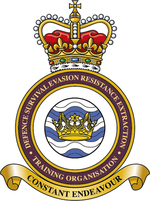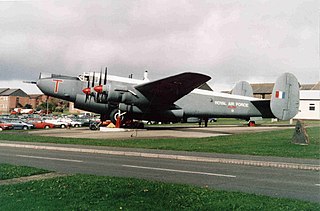
Royal Air Force St Mawgan or more simply RAF St Mawgan is a Royal Air Force station near St Mawgan and Newquay in Cornwall, England. In 2008 the runway part of the site was handed over to Newquay Airport. The remainder of the station continues to operate under the command of the RAF. RAF St Mawgan used to have the widest military runway in the UK (300 ft) and was the home of the Cornwall Air Ambulance service and more recently 505 (Wessex) Squadron Royal Auxiliary Air Force (RAuxAF).
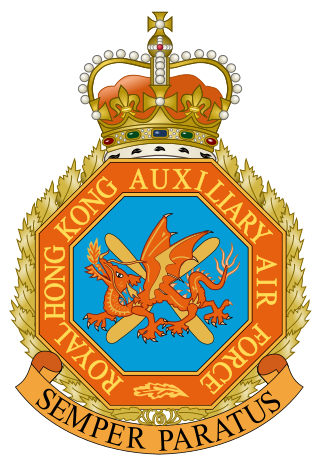
The Royal Hong Kong Auxiliary Air Force (RHKAAF) was a Hong Kong Government department based in Hong Kong. It was formed as an air force in 1949 as part of the Hong Kong Defence Force. In preparation for the transfer of sovereignty from the United Kingdom to the People's Republic of China, the unit was disbanded on 31 March 1993.
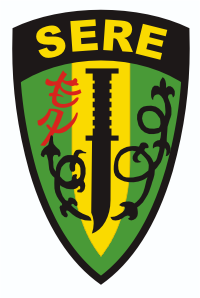
Survival, Evasion, Resistance, and Escape (SERE) is a training program, best known by its military acronym, that prepares U.S. military personnel, U.S. Department of Defense civilians, and private military contractors to survive and "return with honor" in survival scenarios. The curriculum includes survival skills, evading capture, application of the military code of conduct, and techniques for escape from captivity. Formally established by the U.S. Air Force at the end of World War II and the start of the Cold War, it was extended to the Navy and United States Marine Corps and consolidated within the Air Force during the Korean War with greater focus on "resistance training".

A Weapon Systems Officer (WSO), nicknamed "Wizzo", is an air flight officer directly involved in all air operations and weapon systems of a military aircraft.

Combat Survival Training School is a survive, evade, resist, escape (SERE) school for the Royal Australian Air Force. Its base is at RAAF Base Townsville. Its motto is "Adapt and Return".
The Netherlands Naval Aviation Service is the naval aviation branch of the Royal Netherlands Navy.
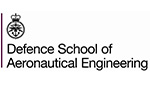
The Defence School of Aeronautical Engineering(DSAE) is a Defence Training Establishment (DTEs) of the British Ministry of Defence. It was formed on 1 April 2004 and provides training for aircraft engineering officers and tradesmen across the three British armed forces. The school comprises a headquarters, No. 1 School of Technical Training and the Aerosystems Engineer and Management Training School all based at RAF Cosford, the Royal Naval Air Engineering and Survival Equipment School (RNAESS) at HMS Sultan, with elements also based at RAF Cranwell and MOD St. Athan.
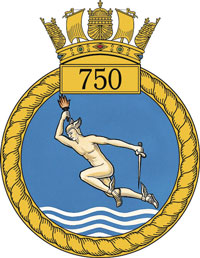
The Royal Navy Observer School grew out of HM Naval Seaplane Training School at RNAS Lee-on-Solent as a result of a series of changes of identity and parent unit. From 1918 until 1939 the Royal Air Force was responsible for naval aviation, including training and provision of aircrew to the Royal Navy. With the return of naval aviation to the Royal Navy on 24 May 1939, the Observer School was established as 750 Naval Air Squadron of the Fleet Air Arm. During World War II the squadron moved to Trinidad to continue training aircrew. It was temporarily disbanded in October 1945. The squadron reformed in 1952 and is currently based at RNAS Culdrose, where it trains approximately 30 Royal Navy observers every year.
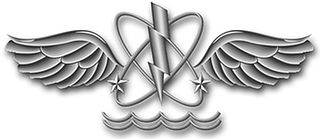
Naval Aircrewman (AW) is an enlisted general rating of the U.S. Navy. Sailors in the AW rating serve as aircraft systems operators or inflight system maintenance technicians aboard U. S. Navy fixed and rotoray winged aircraft. They perform duties as varied as aerial gunners, rescue swimmers, radar and sonar operators, airborne mine countermeasures system operators, strategic communications systems specialists, loadmasters, repair technicians, and various other functions depending on the specific aircraft type in which they fly. The rating is divided into five subdivisions termed "service ratings". Those service ratings are: Naval Aircrewman Operator (AWO); Naval Aircrewman Helicopter (AWS); Naval Aircrewman Tactical Helicopter (AWR); Naval Aircrewman Mechanical (AWF); and Naval Aircrewman Avionics (AWV). All five service ratings are identified by a single AW Rating Badge. Many technologically advanced navies have a similar trade.
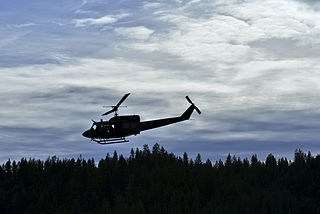
The 336th Training Group is the combat survival training group of the United States Air Force. The group is located at Fairchild Air Force Base, Washington, with one subordinate unit at Naval Air Station Pensacola, Florida, and one at Eielson Air Force Base, Alaska.

Combat Rescue Officer (CRO) is a Special Warfare Officer career field in the United States Air Force. Its Air Force Specialty Code (AFSC) is 19ZXC and it was created to strengthen USAF Special Warfare personnel recovery capabilities by providing commissioned officer leadership that possessed an operational skillset paralleling that of the enlisted pararescuemen (PJ). The CRO specialty includes direct combatant command and control of Combat Search and Rescue (CSAR) operations. They plan, manage and execute the six tasks of CSAR: prepare, report, locate, support, recover, and reintegrate isolated personnel and materiel. CROs conduct strategic, operational and tactical level planning, provide battle staff expertise, manage theater personnel recovery operations and conduct combat special operations.

The Royal Air Force Search and Rescue Force was the Royal Air Force organisation which provided around-the-clock aeronautical search and rescue cover in the United Kingdom, Cyprus and the Falkland Islands, from 1986 until 2016.
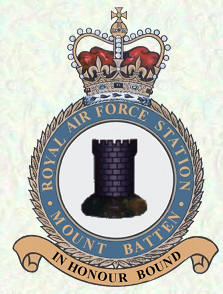
Royal Air Force Mount Batten, or more simply RAF Mount Batten, is a former Royal Air Force station and flying boat base at Mount Batten, a peninsula in Plymouth Sound, Devon, England, UK. Originally a seaplane station opened in 1917 as a Royal Navy Air Service Station Cattewater it became RAF Cattewater in 1918 and in 1928 was renamed RAF Mount Batten. The base is named after Captain Batten, a Civil War commander who defended this area at the time, with the Mountbatten family motto In Honour Bound taken as the station's motto.

The Joint Personnel Recovery Agency (JPRA) is a Chairman's Controlled Activity and is designated as DoD's office of primary responsibility for DoD-wide personnel recovery (PR) matters, less policy. JPRA is headquartered in Fort Belvoir, Virginia with schools located in Fredericksburg, VA and Spokane, WA. JPRA currently provides for commanders, forces, and individuals on joint PR activities through development and conduct of education and training courses, and specialized individual training. The agency assesses, advises, and evaluates PR curriculum and establishes Joint PR standards in collaboration with the DoD Components for formal Joint PR training, including Code of Conduct and SERE. JPRA also provides DoD Components with analytical support, technology research and integration, maintenance of databases and archives, and development of lessons learned. JPRA encourages partnerships by assisting with non-DoD agencies, multinational partners, and others, with PR-related education and training programs.
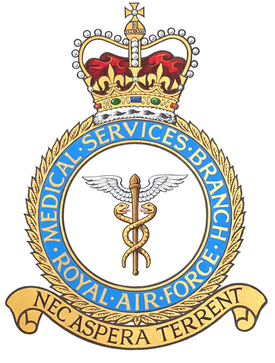
The Royal Air Force Medical Services is the branch of the Royal Air Force that provides health care at home and on deployed operations to RAF service personnel. Medical officers are the doctors of the RAF and have specialist expertise in aviation medicine to support aircrew and their protective equipment. Medical officers also carry out Aeromedical evacuations, providing vital assistance on search-and-rescue missions or emergency relief flights worldwide.

The Marine Branch (1918–1986) was a branch of the Royal Air Force (RAF) which operated watercraft in support of RAF operations. Just days after the creation of the RAF itself, the Marine Craft Section (MCS) was created with the transfer of Royal Naval Air Service (RNAS) vessels and personnel to the new service. Originally tasked with the support of RNAS, and later RAF, seaplanes, Marine Craft Section was to achieve its greatest size during the Second World War, and achieved fame for its role in air-sea rescue operations. After the war MCS was granted full branch status on 11 December 1947; however, post-war the role of the new branch became greatly reduced with the end of the British Empire, the withdrawal of flying boats from service, and the increasing use of helicopters in air-sea rescue. The branch was disestablished on 8 January 1986.
At the end of the Cold War in 1989, the Royal Air Force (RAF) structure was as follows:
Air 424 is the four-week survival training course that the Royal Navy gives to its pilots, whether helicopter or fixed-wing.

Royal Air Force Bridlington, or more simply RAF Bridlington, was a Royal Air Force station located in Bridlington, East Riding of Yorkshire, England, between 1929 and 1978. Several units operated at Bridlington, Air Gunnery Schools, Initial Training Wings, and an Air Sea Rescue launch unit, but the longest occupier, was No. 1104 Marine Craft Unit (MCU). The station consisted of various buildings across the town that were requisitioned for RAF use before and during the Second World War. Outside of this time, the RAF presence was mostly in the harbour area and as it was such a small unit, No. 1104 MCU was looked after by other RAF Stations nearby.
The Underwater Escape Training Unit is a military training centre for survival at sea in Somerset; the site is mainly for helicopter aircrew.
